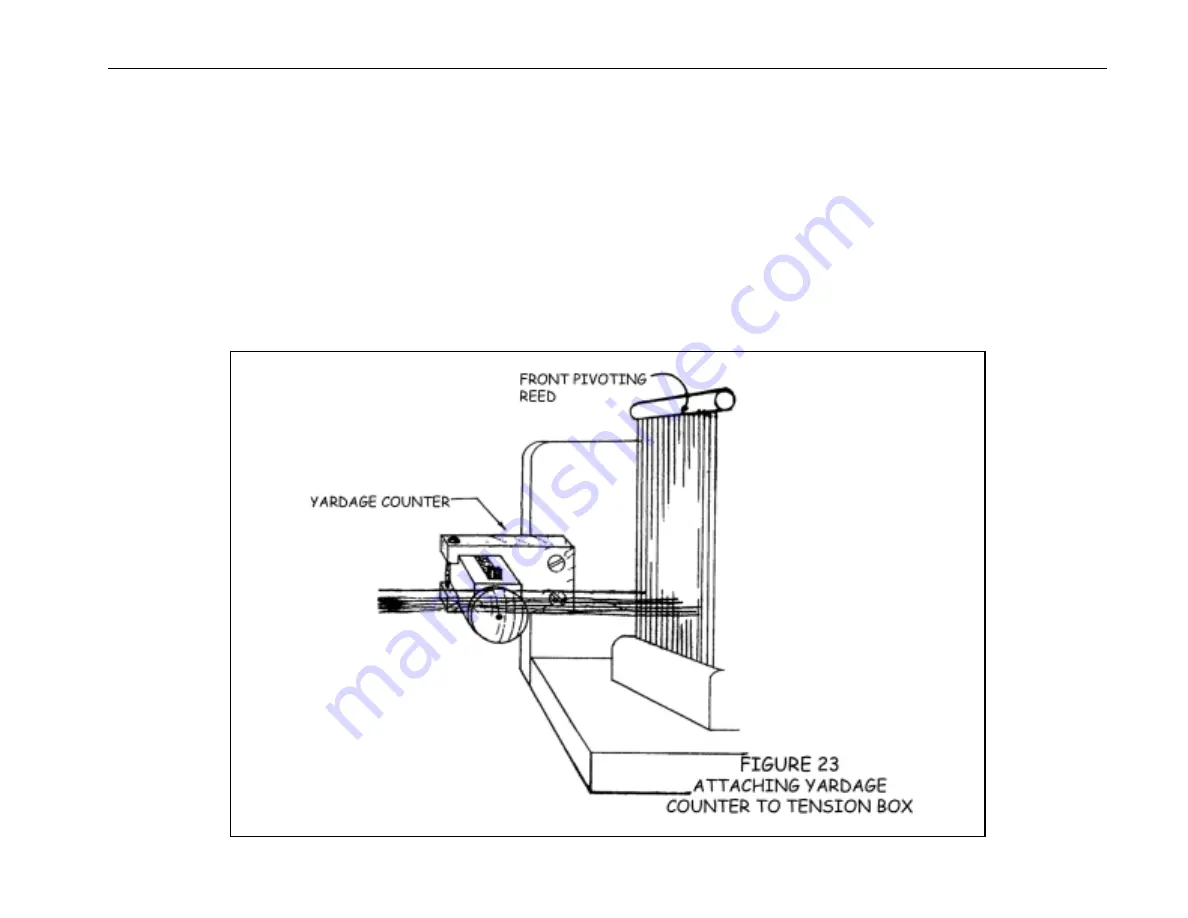
Page 5-7
COUNTING TURNS OR YARDAGE
To determine the length of the warp you are putting on the beam, you need to count either turns, revolutions, or yards.
To count turns, you can do it in your head, but it is more reliable to use a digital or mechanical revolution counter.
Counting revolutions even with a digital counter will still give the approximate warp length only, because the circumference of the beam will in-
crease slightly with each rotation. This is called beam build up.
To count yards with a yardage counter while warping the sectional beam, you need to place the yardage counter at the front of the tension box. You
should use an extra thread for measuring yardage, because if you use one of the threads from your warp section, that particular thread would have a
different tension once you start weaving. The extra thread you use for measuring purposes only can be reused for each section.















































